Inside New Canaan, Connecticut’s Enveloping “At The Noyes House” Exhibition
80 works of art and design within an iconic mid-century modernist home
Harvard Five architect and IBM industrial designer Eliot Noyes’ mid-century modernist home currently hosts an enveloping exhibition, At the Noyes House: Blum & Poe, Mendes Wood DM, and Object & Thing, that transports guests out of time and place. In the same Connecticut town that draws architectural tourists to the Philip Johnson Glass House, New Canaan, the Noyes House exhibit sees the work of 34 international artists and designers playing off its unique glass surroundings—and is open to the public for the first time ever. Remarkably, Noyes was the head of the industrial design division of MoMA at the same time Johnson was the head of architecture there—and Johnson (with a handful of their other peers under Walter Gropius) came to the town at the behest of Noyes. Thus, a movement was born.
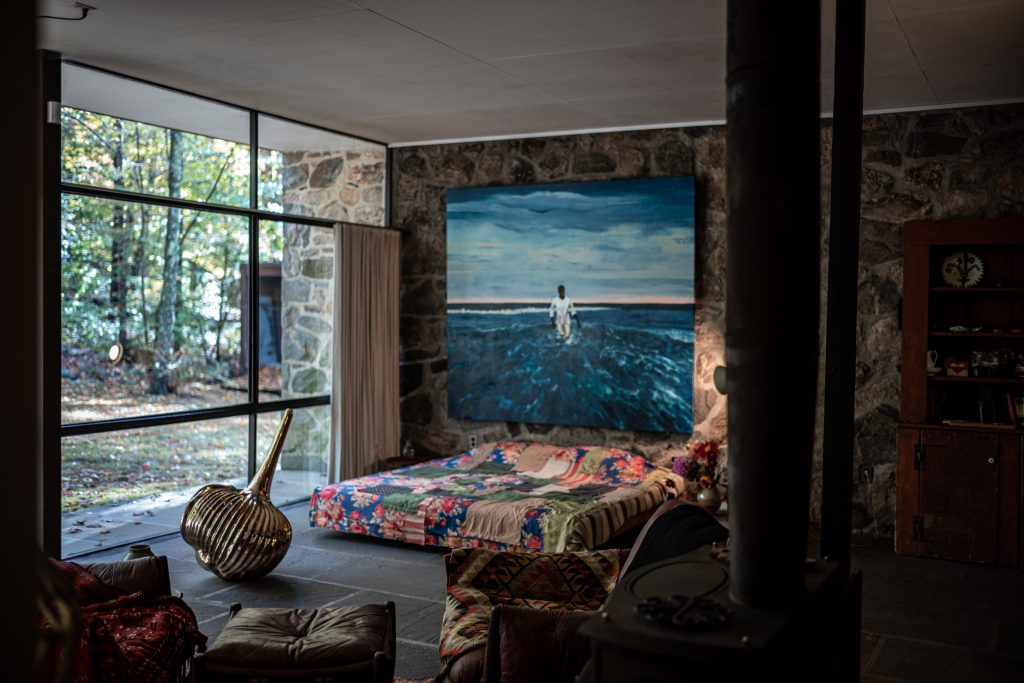
Abby Bangser, founder of the future-forward fair Object & Thing and former artistic director of Frieze Art Fairs, walked us through the exhibit. Object & Thing’s inaugural iteration in May of last year took place in a very different setting: 99 Scott, an event space in Brooklyn’s Bushwick neighborhood. “It was all about presenting art and design objects together, without separation or hierarchy,” Bangser tells CH of their debut. “We presented over 200 works in the first edition from 34 galleries.” Bangser had every intention of returning to that location, but plans were disrupted by the pandemic.

A resident of New Canaan for the last six years, Bangser was aware of the Noyes House and met Eliot Noyes’ son Frederick, years before. The house was built by Noyes and was completed in 1955. It’s where Mary “Molly” Duncan Weed and Eliot Noyes’ five children grew up and the act of nurturing the warmth of family plays a fundamental role in the design. Bangser’s husband is a partner at the gallery Blum & Poe and during hikes together in the area, they ruminated on organizing an event in New Canaan. After an informal discussion, their other collaborator—from the gallery Mendes Wood DM—brought an architecturally significant home in Weston, Connecticut to Bangser’s attention, but she suggested the Noyes House instead.

Although non one resides in the home anymore, the family maintains the Noyes House like a time capsule, to a certain degree. In 2019, it was signed into preservation through the Preservation Connecticut organization.
“We made this [exhibit] an investment in it and did some restoration over the summer,” Bangser continues. “The family is interested in potentially opening the house to the public; they’re trying to figure out the right way of doing that. They have six acres and have considered residencies or design talks, too. Altogether, a large part of this show is about putting a spotlight on the house.”

Both inside and out, there are “just over 80 works by 34 contemporary artists and designers and it’s a true collaboration,” Bangser continues. “It’s also very international. You’d also have to go to 15 or 16 galleries to see that make-up of artists you are seeing here, so in a way it is a small art fair.” Although the Noyes family were not art collectors, they did have art relationships—some rather extraordinary, including with the Eames family. “They were very good friends with Alexander Calder, who would come down from Roxbury, Connecticut. The large-scale outdoor stable piece, ‘Black Beast,’ which is now in MoMA’s collection, began right here [in the central courtyard]. Wherever we could, we tried to reference how the family had art and design.”
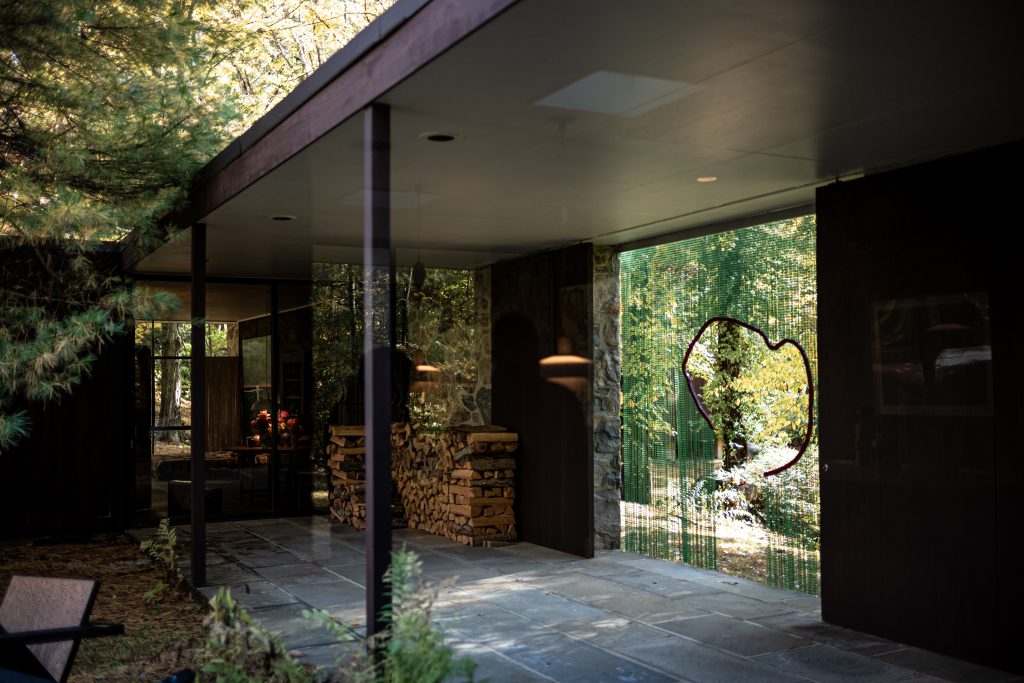
Within the exhibit, there are also many commissions. “The outdoor concrete pad normally has outdoor furniture on it, so I gave those dimensions to Green River Project LLC and they came up with what is placed there now. They also came and shot their whole outdoor collection here and they named the piece we feature the Noyes Chair. Frederick Noyes gave them permission. Daniel Steegmann Mangrané, a Spanish artist based in Rio, did a framed passage as a site-specific commissioned installation in the back. The red frame piece in the center stays consistent but the curtain that connects to it changes.”

“The house is really unusual in that there is no indoor connection between its two sides. You have to go outside to go home [to the bedrooms and bathrooms]. Noyes did this on purpose, as he really wanted his family to step outside and see the snow, or the moon. He wanted them realize that you were here in nature.” This is evident when ambling between the wings, or around the structure itself. Aside from glass, the other dominant materials are local, naturally sourced stones that anchor the home into its landscape.
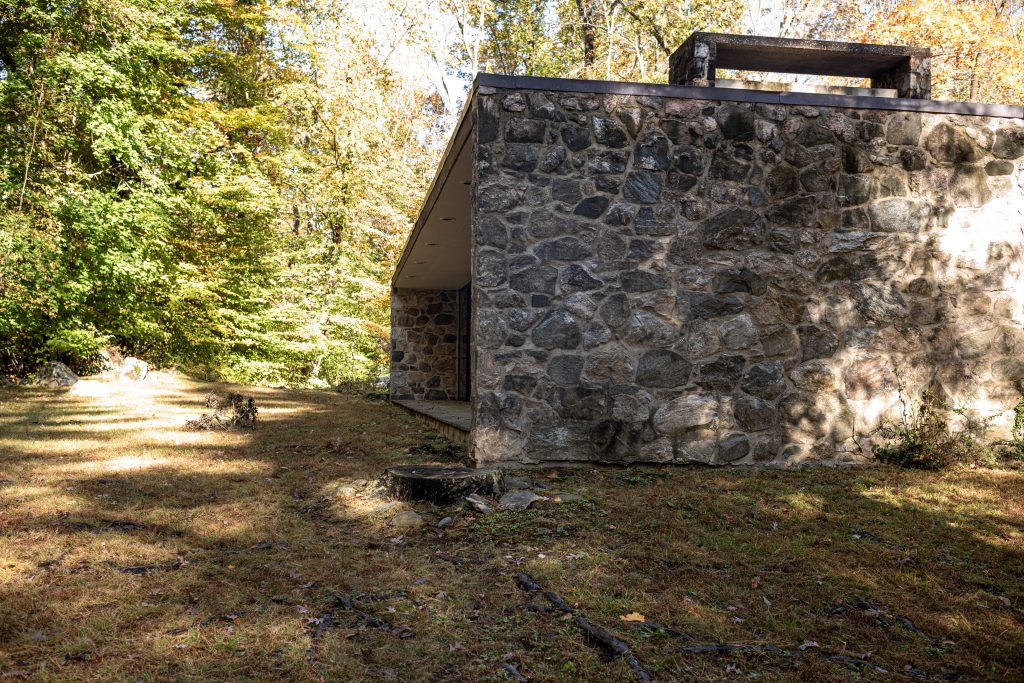
“It is a treasure hunt of our works among their furnishings,” Bangser continues, pointing out the family’s brown sofa that’s been there since the ’50s. “We commissioned Megumi Arai to do two textile pieces,” she explains, regarding a piece by the Japanese-American artist who makes her own dyes from avocado pit or fermented persimmon. Sonia Gomes‘ work hangs where there was once a Calder mobile. Miro and Matisse tapestries have been replaced with works by artists like Sheila Hicks and Faye Toogood, who also contributes two superb stools.
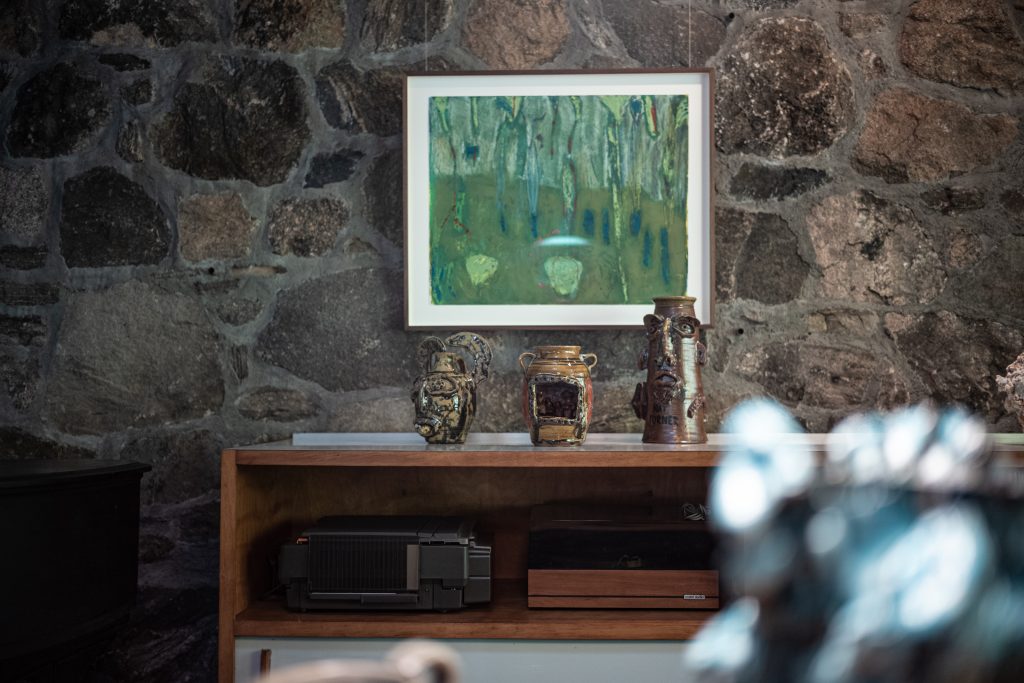
An undeniable highlight happens to be the multiple works by North Carolina-based potter Jim McDowell, whose ancestors were enslaved people. Bangser explains, “He is continuing the tradition of making face jugs. They were meant to mark graves and act as grave stones, which enslaved people were not permitted. They were often inscribed with a prayer or information about the person. He is inscribing them with political statements.”
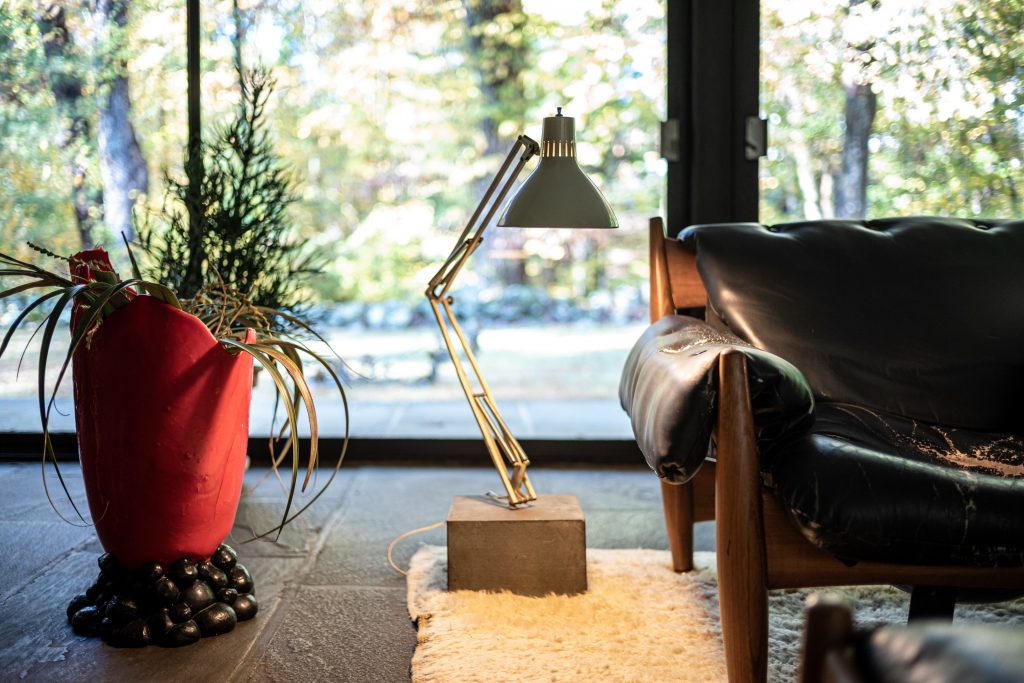
It’s this emotional collision of past and present, art and design, form and function that elicits so many reactions when walking around and through the exhibit. From original Sergio Rodrigues chairs to a portrait of George Floyd, entitled “Wade in the Water II,” by artist Antonio Obá, visitors traipse through time. One can even revisit of a copy of Life magazine from 1963, which sits on a table. It includes George Silk photographs of the house in the snow. Perhaps unsurprisingly, it somehow feels the same—or, one at least believes it feels the same. This is one of the exhibition’s most remarkable successes.
At the Noyes House: Blum & Poe, Mendes Wood DM, and Object & Thing is open to those with confirmed appointments every Friday and Saturday through 28 November.
Images by Josh Rubin























